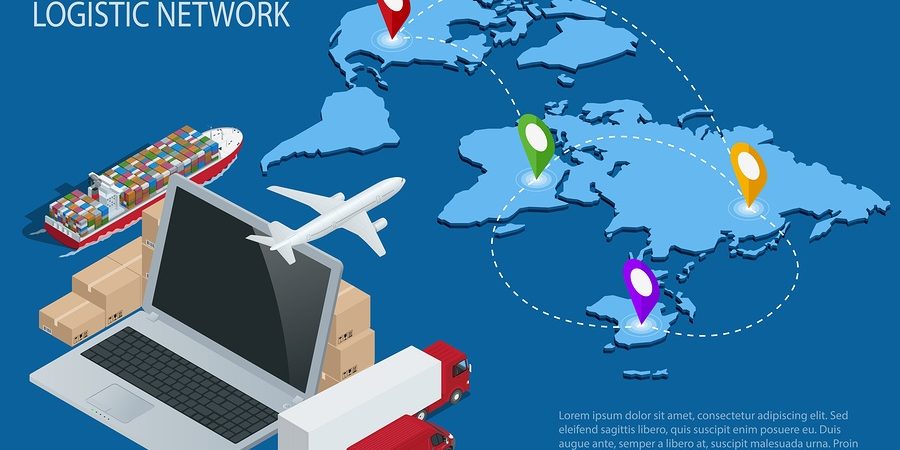Your supply chain is essentially a set of successive contractual arrangements designed to provide you with goods and services that you either use internally or pass on to your customers. This is typically a controlled process, best described as a network with contract conditions and oversight so that your organisation can retain control over the quality of the product you are sourcing.
Why workplace safety is important across your supply chain
According to the International Labour Organisation, 6,300 people die as a result of occupational accidents or work-related diseases every day. That’s more than 2.3 million deaths every year. Even without considering deaths, there are 317 million accidents that occur on the job annually. Many of these accidents result in extended absences from work, making both the human and business costs enormous.
Inadequate workplace safety is a significant financial burden, draining an estimated 4% of global GDP each year. Employers face costly issues such as forced early retirements, loss of skilled staff, absenteeism, and high insurance premiums due to work-related accidents and diseases. Yet many of these tragedies are completely preventable with sound prevention, reporting, and inspection practices.
Workplace safety across the supply chain is typically governed by three key factors
- The economic and resource pressures that become increasingly greater towards the bottom of the supply chain, which can lead to safety compromises.
- The size of the working environment and the nature of the management structure, corporate culture, and employees in a location, particularly if those employees are not properly skilled or trained.
- The lack of a coordinated approach to workplace safety and communication, due to the fragmented nature of modern supply chains (which can be based across various remote locations nationally and internationally).
Resources to help you improve workplace safety across your supply chain
If you are an exporter looking to maintain the safety and compliance of your supply chain, there are some resources that will provide you with valuable information, recommendations, and legal requirements.
Corporate Social Responsibility (CSR)
Research shows that workplace safety outcomes are improved when the key organisation in the supply chain is also the main driver of workplace safety. In recognising this, many large companies have made it a key CSR platform to improve workplace safety, especially in places where workers may be more vulnerable and less able to protect themselves. By strongly advocating for better workplace safety practices, and possibly imposing financial penalties on those who do not comply with those agreed standards, companies at the peak of the supply chain have the power to force better working conditions across the supply chain. Organisations such as the ACCSR can help you develop a CSR strategy.
International Labour Organisation (ILO)
Australia is one of the 186 member countries of the ILO, a powerful labour advocate developing a system of international labour standards aimed at promoting opportunities for people to obtain decent and productive work in conditions of freedom, equity, security and dignity.
The ILO has developed a set of standard workplace and labour safety guidelines, research documents, and resources to help companies create safer workplaces for staff across their enterprise and supply chain. You can find these, and more information about the organisation, at the ILO website.
Government Regulation and Industry Regulatory Bodies
Governments – especially those in developed nations – are taking a greater interest in supply chain safety. While governments and regulatory bodies can find it troublesome to enforce labour standards on overseas operations, they can help you crack down on the domestic links in your supply chain.
The ‘general duty’ provisions of Australia’s work health and safety legislation address contracting relationships, including labour hire. The Work Health and Safety Act includes principal contractor duties that outline responsibilities as they relate to subcontractors. This approach has been longstanding in some states and provided a template for managing complex subcontracting arrangements across supply chains, particularly the construction sector.
Additional measures to regulate supply chains have been introduced at the Federal level such as the Road Safety Remuneration Act and the Fair Work Amendment Act. Both sets of legislation represent fresh efforts to protect the health and safety of vulnerable workers at the bottom of supply chains.
The new legislative environment is a sign that government and peak industry bodies have recognised the importance of safety right across the supply chain and will lobby for greater controls and higher safety standards where possible.
Auditing for compliance is key
Ensuring workplace safety throughout your supply chain can’t be accomplished by simply creating a set of rules and guidelines and expecting them to be followed, any more than a speed limit on a highway is effective without the support of law enforcement. The only feasible way to enforce such plans is through consistent, scalable, end-to-end auditing.
Compliance Checkpoint is a flexible, scalable, responsive software platform that uses integrated cloud technology and tablet functionality to fully automate your complex and time-consuming audit, risk, and compliance tasks. Adopting this solution is the next step in compliance maturity for your organisation, offering real business benefits and promising to better manage your compliance requirements across your organisation and the entire supply chain.







